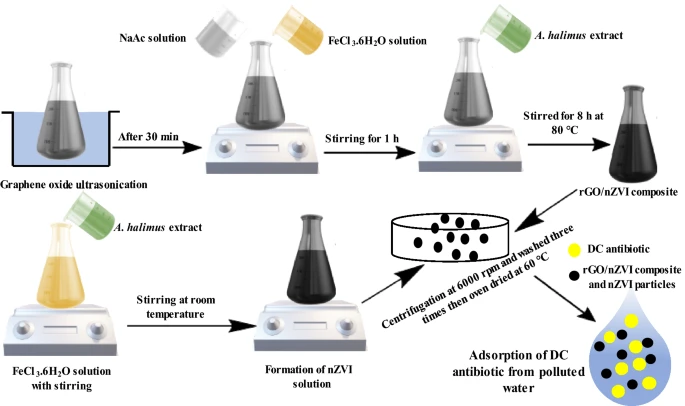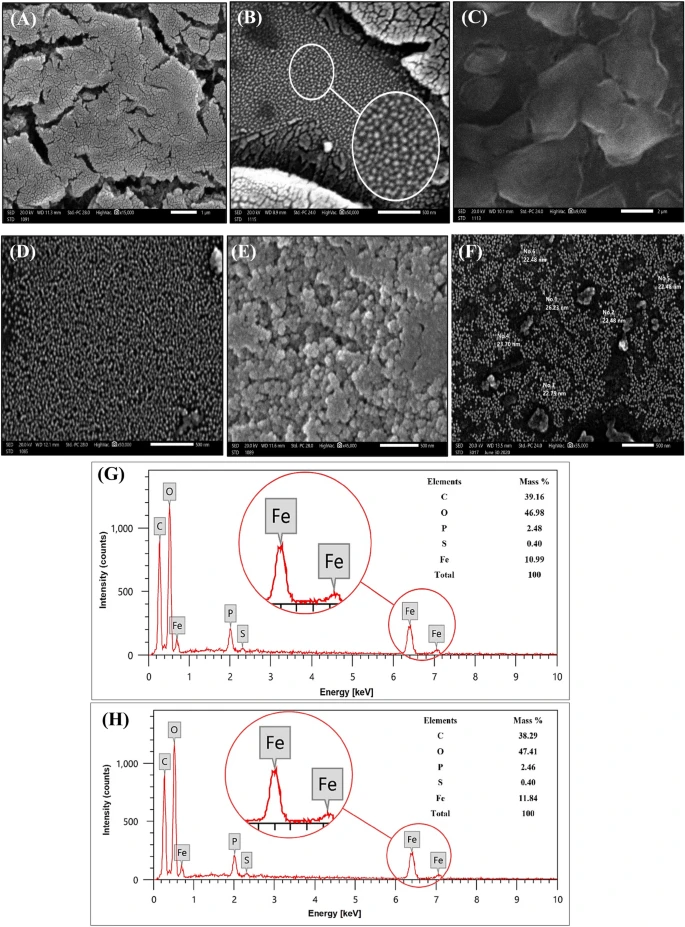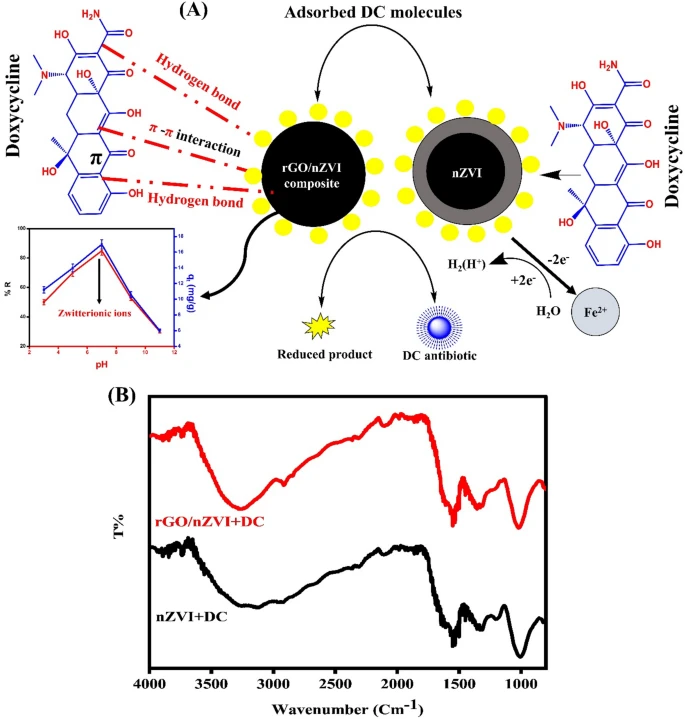Given the ever-increasing threats posed by water pollution, researchers are focused on developing an effective approach for removing antibiotic waste from water.

Study: Synergetic effect of green synthesized reduced graphene oxide and nano-zero valent iron composite for the removal of doxycycline antibiotic from water. Image Credit: solarseven/Shutterstock.com
In a paper published in the journal Scientific Reports, a novel composite of reduced graphene oxide (rGO) and nano-zero valent iron (nZVI) was developed via a green and facile approach, utilizing the extract of Atriplex halimus leaves as a stabilizing and reducing agent.
The Doxycycline Problem
Doxycycline is a semi-synthetic antibiotic that works similarly to penicillin. It belongs to the tetracycline antibiotic family and is widely used for treating bacterial infections and sexually transmitted diseases.
Doxycycline is an emerging pollutant that has been detected in both surface and groundwater. Humans cannot metabolize this chemical properly, and its remains are released into the ecosystem, leading to serious health and environmental concerns.
Exposure to small amounts of doxycycline may kill aquatic photosynthetic microorganisms, promote antibiotic resistance, and represent a barrier to the propagation of antimicrobial bacteria. Hence, removing this contaminant from wastewater is essential.
The natural breakdown of doxycycline in water is a relatively sluggish process. Biodegradation, photolysis, and adsorption are examples of physiochemical mechanisms that can break down doxycycline but only in small quantities and at a relatively slow pace.
Among these processes, adsorption is the best in terms of its cost-effectiveness, high efficiency, and facile and eco-friendly nature.

Figure 1. Schematic diagram and digital photos for the green synthesis of rGO/nZVI composite and nZVI using Atriplex halimus extract and removal of DC antibiotic from polluted water.
Pros and Cons of Using Nano-zero Valent Iron
Nano-zero valent iron is a highly efficient substance for removing antibiotics from water.
This capacity stems from the remarkable features of nZVI, which include high reactivity, a big surface area, and several external binding sites.
Unfortunately, nZVI is susceptible to agglomeration in aqueous conditions, reducing its efficacy in eliminating contaminants because of the formation of an oxide layer that suppresses the reactivity of nZVI.
The agglomeration of nano-zero valent iron particles may be decreased by using polymers and surfactants to modify their surface or by incorporating them in composites with other nanomaterials.
How Can Graphene Help?
Graphene is a 2D carbon-based nanoscale material composed of carbon atoms with sp2 hybridization in a honeycomb-like lattice.
Graphene possesses a big surface area, significant mechanical strength, and remarkable electrocatalytic performance. It is an excellent conductor of heat and electricity, and an ideal supporting material for depositing inorganic nanomaterials on its surface.
The remarkable physiochemical features demonstrated by the combination of graphene and metallic nanoparticles enable it to significantly outperform the individual materials and allow for better nanoparticle distribution for effective water treatment.

Figure 2. SEM images of rGO/nZVI composite (A–C), nZVI (D,E), and EDX pattern of nZVI/rGO composite (G), and nZVI (H).
Benefits of Using Plant Extracts
Plant extracts offer a far superior alternative to the hazardous chemical reductants often utilized in the fabrication of nZVI and rGO.
Plant extracts offer the benefits of availability and affordability. They are eco-friendly and function as both stabilizing and reducing agents.
Therefore, the team used the extract of Atriplex halimus L. leaves as a reductant and capping agent to synthesize the rGO/nZVI composite in this study.
Atriplex halimus belongs to the Amaranthaceae family and is a perennial nitrophilous plant that is available across a large geographical region.
Important Findings of the Study
In this study, the team used the extract of A. halimus leaves to synthesize nZVI and a new rGO/nZVI composite via a cost-effective and eco-friendly approach.
The characterization of nZVI and rGO/nZVI revealed that reduced graphene oxide improved the distribution and stability of nZVI.
Increasing the quantity of nZVI incorporated into the folds of reduced graphene oxide enhanced the pore volume as well as the specific area of the rGO/nZVI composite.
These structural improvements made it easier for doxycycline and the rGO/nZVI composite to interact, improving the doxycycline removal efficiency.

Figure 3. Plausible adsorption mechanism for the removal of DC antibiotic by rGO/nZVI composite and nZVI (A). FTIR spectra for the adsorption of DC onto rGO/nZVI and nZVI (B).
The rGO/nZVI composite demonstrated an excellent capacity to remove doxycycline antibiotics from water, via adsorption at various initial concentrations of doxycycline and optimal reaction settings.
The influence of various factors was also investigated by adjusting the temperature, pH level, contact duration, adsorbent dosage, and initial adsorbate concentration.
Thermodynamic investigations revealed that the adsorption mechanism was spontaneous and exothermic.
The rGO/nZVI composite demonstrated excellent recycling capabilities even after six consecutive cycles, as well as better doxycycline adsorption performance.
The novel rGO/nZVI composite is expected to be successful in the adsorption of various environmental contaminants.
Reference
Abdelfatah, A. M., El-Maghrabi, N., Mahmoud, A. E., & Fawzy, M. (2022). Synergetic effect of green synthesized reduced graphene oxide and nano-zero valent iron composite for the removal of doxycycline antibiotic from water. Scientific Reports, 12. Available at: https://doi.org/10.1038/s41598-022-23684-x
Disclaimer: The views expressed here are those of the author expressed in their private capacity and do not necessarily represent the views of AZoM.com Limited T/A AZoNetwork the owner and operator of this website. This disclaimer forms part of the Terms and conditions of use of this website.